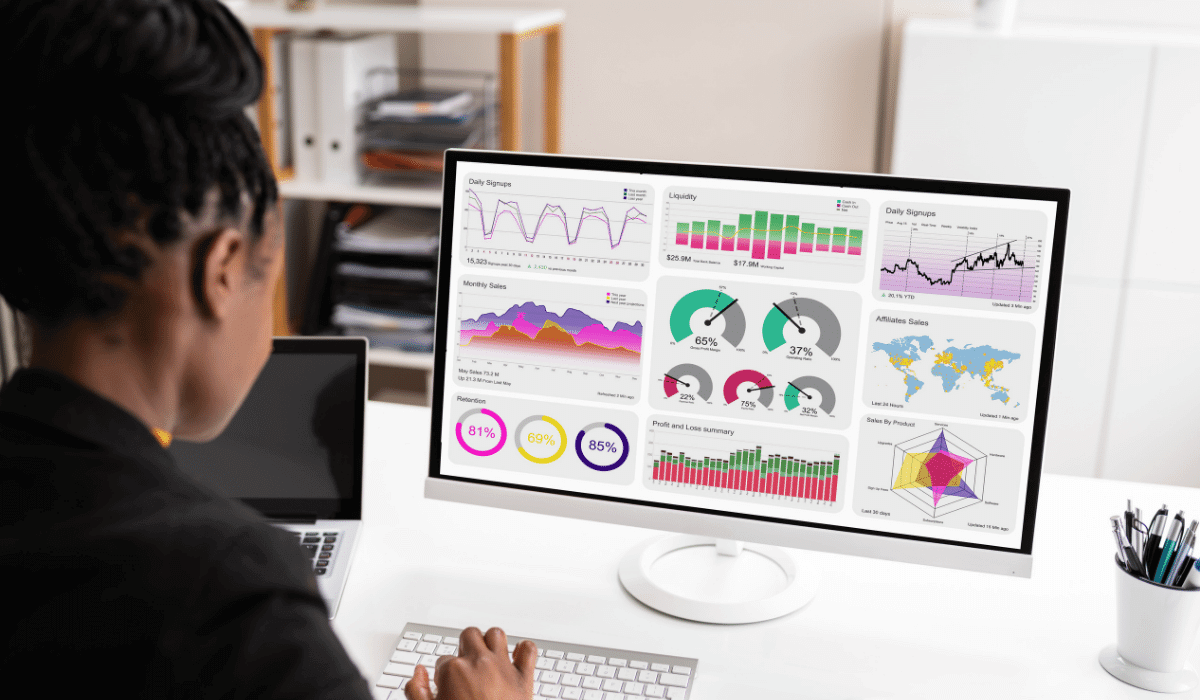Most organizations across different domains are always ready to record data from their operations and their customer data since it aids in discovering patterns, and trends. Besides, 70% of organizations strongly believe that data visualization is a fundamental aspect of their growth and development.
The insights generated from data visualization play a vital role in making data-driven decisions that impact the success of businesses. The role of visualization in business intelligence has greatly expanded since the two work together to attain a uniform business objective. Visualization is all about presenting data in a simplified format to make it easy to understand.
However, you cannot deny the power of business intelligence on the milestones that have been attained within the business industry. This article sheds light on the importance of data visualization in business intelligence. Let’s get started!
Here’s Why Is Visualization Important in Business Intelligence
1. Enhances Data-Driven Decision Making
It is evident that any business meeting that mainly focuses on data tends to be shorter than those that purely rely on text and numbers. Data visualization makes it easier to develop a solution during discussion since they are guided by data-driven ideas. Business intelligence is mainly guarded by data visualization through generating actionable data insights.
If you have installed the right data visualization systems in place, all your staff members enjoy gaining better and more actionable insights in the form of charts/graphs (Line chart, Pareto chart, Bar chart, Comparison charts, etc.) that enable them to understand the customer behavior and perceptions regarding the business brand. Note that data visualization combines creative storytelling and technical analytics to generate exciting data reports.
However, the visualization needs to properly suit your business goals to make it easier to attain significant milestones in business. Note that there are different types of data visualization that are used in data analytics, while others are used in the presentation of the data in an easy-to-read and understand format.
Some visualizations are mainly designed to showcase concepts, processes, and strategies you can use in decision-making. You can easily customize your preferred data visualization option to attain your goals in business.
See Also: 5 Best Data-Driven Marketing Strategies with Examples
2. Uncovers Hidden Patterns and Deeper Insights
Visualization has the power to uncover trends and patterns that are hidden within data sets. Remember that the relationship existing within data values cannot be uncovered with bare eyes since you have to digest all the technical elements and bring everything to light. The deeper data insights and relationships can only be brought to light by using visualization.
You can use data to forecast the trends and patterns within the business industry to create a perfect route for making sales and facilitating other essential business operations. Visualization aids in identifying all the essential factors that support business operations across the industries. This enhances a better understanding of the headwinds within the industry, increasing the chances of success.
In addition, data visualization can help you understand how to carry on your daily operations and align them with your business goals. This includes monitoring your customer responses and comments regarding the products and services that you are offering. You can then make adjustments depending on your customers’ interests.
3. Easy Absorption of Large and Complex Data

When data is presented in an organized manner, you can easily read and grasp the major data points. Business intelligence mainly deals with massive amounts of data that require in-depth analysis to generate vital insights. Data visualization digs down deep through complex data to generate insights and present them in an orderly way.
Also, you can easily point out and appreciate the interrelation existing between data values that are presented in an orderly format. Remember that no one has enough time to read through confusing data elements that are poorly arranged. When data is presented in an easy-to-read format, it also increases the absorption rate among viewers.
Given that many people prefer the use of their mobile phones, it is vital to ensure that the data is presented in an orderly manner to make it easier for people to read and understand. Even if you have robust systems of collecting data and lack the most appropriate way of displaying information, then you will have done nothing.
You should ensure that your target audience does not have any challenges when it comes to reading the data reports that you present them. Data visualization creates a simple format of data report that can easily convey information that readers can easily understand. Readers can easily read through short chunks of data and comprehend the intended information.
You May Like: How Is Data Visualization Used in Finance?
4. Improves Customer Engagement
When creating data reports, you should always ensure that your audience is fully engaged. Nothing feels good like giving your customers room to incorporate their engagement in your data presentation. Data visualization gives you an expansive to enhance customers’ engagement by presenting exciting visuals that impact the rate of comprehension.
Visualization gives the room that enables customers to drive their opinions and action in business. Also, it enhances collaboration among business stakeholders who can easily view and appreciate the insights generated from the data. You can opt to consult your visualization to get a clear view of things regarding the milestones you have achieved within a specific time frame.
Instead of presenting data in rows and columns, data visualization gives you room to elaborate the information using different types of visuals that are exciting to read and easy to understand. The attractive nature of the visuals intrigues viewers to spend some of their time reading through the presented information and analyzing the insights.
When doing a visual presentation of your data, presenting the data that showcase your strength earns your business brand trust and credibility within the target market and increases your chances of securing potential customers. You should highly invest in the visuals that prove your claims instead of only using descriptive text.
Remember that investing in interactive visuals plays an integral role in enhancing customer engagement. Ask simple questions within the visuals to allow the readers to think a little bit and present the right answers at the end of the presentation to ensure that the point has been delivered home.
See Also: What Should Companies Do to Protect Cloud Data?
Conclusion
Researchers have confirmed that the business intelligence market size is expected to hit $39.35 billion by the end of the year 2027. As the BI market size continues to expand, it is vital to keep the bits of data visualization in the game since it significantly impacts the continued growth of the market and the business industry in general.
In order to make sound and timely business decisions, it is important for businesses to be able to visualize their data. By being able to see the data in different ways, businesses can understand what is happening within their company and how they can improve. There are many different visualization tools available to help businesses get started.
If you have any suggestions on which visualization tools or methods work best for your business, please leave the comments below. We would love to hear from you!





